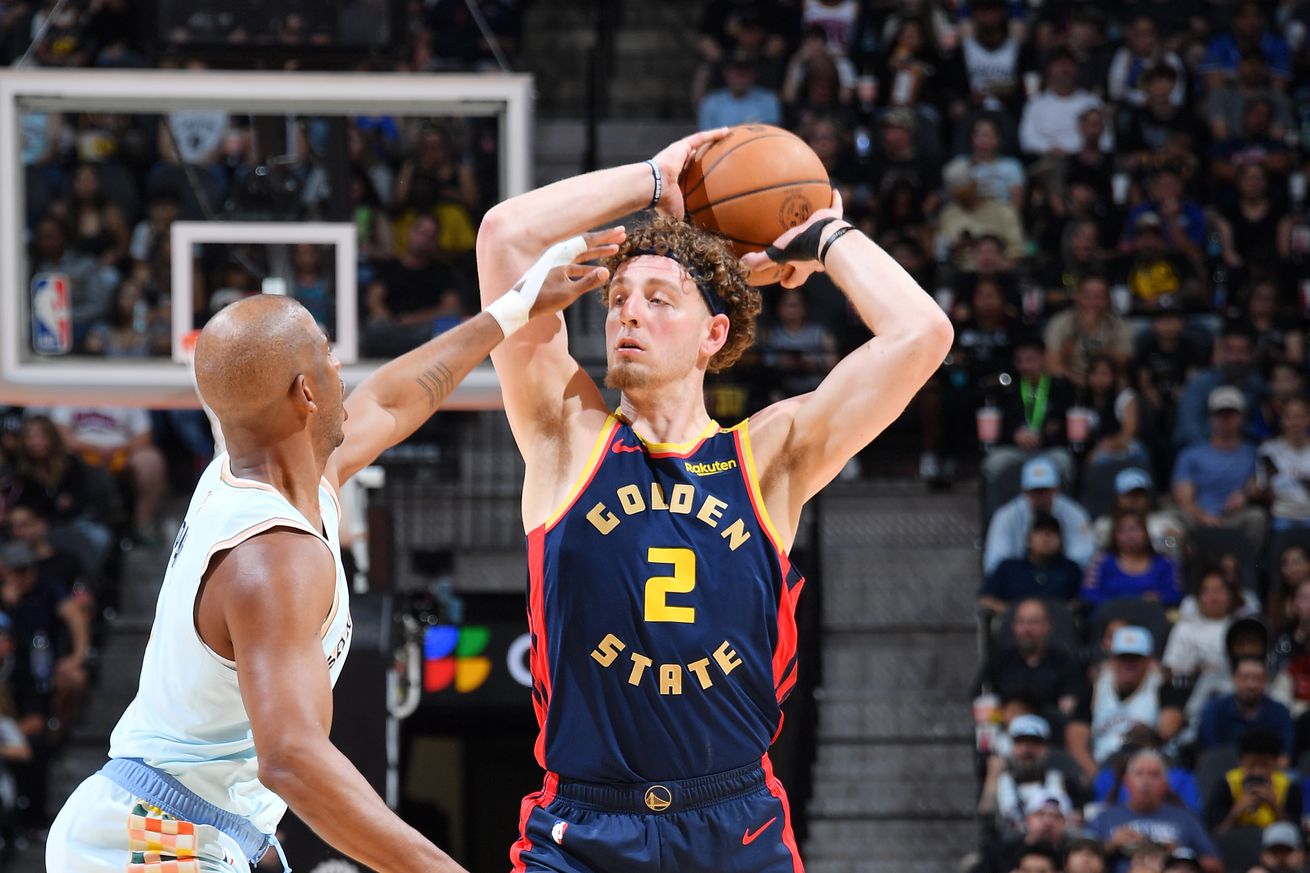
Dubs reclaim the sixth seed
Dead-ball situations — especially during after-timeout (ATO) situations, before jump ball, and before the start of quarters — provide coaches with the best platform to concoct carefully crafted sets that generally see higher success rates than freelance situations. In the Golden State Warriors’ case, Steve Kerr is known for his skills with the clipboard despite his widely known preference for read-and-react basketball. Organization and chaos need not be mutually exclusive, as Kerr has demonstrated plenty of times.
As such, Kerr puts value in every instance he can get his players to play organized basketball, even if the Warriors are just average relative to the rest of the league in terms of both ATO points per possession (PPP) and dead-ball PPP (far from the reaches of a team such as the Miami Heat, considered elite in both ATO PPP and dead-ball PPP, a hallmark of Erik Spoelstra).
Here is how team’s offenses perform in ATO and dead ball situations compared to their overall offense pic.twitter.com/YCVZUwgWc4
— AOP_NBA (@aop_nba) March 27, 2025
While Kerr does have an underrated and understated talent for play design, none of it works as well if Steph Curry isn’t the central focus of his sets. As such, to begin the Warriors’ contest against the San Antonio Spurs, Kerr drew up a set that had Curry touch the ball to begin with — but on a possession Curry didn’t finish, nor was directly involved in its finish.
To start things, Kerr had his players line up in “Horns” formation: with Curry handling the ball up top, Jimmy Butler and Draymond Green occupy both elbows, with Moses Moody and Brandin Podziemski filling both corners (or in this case, Moody — Podziesmki opts to speed the process up by making himself available for the wing pass with Curry facing ball pressure).
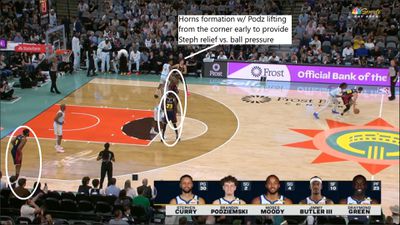
Upon passing to Podziemski, Curry then cuts along the strong-side slot area (often called a “UCLA” cut, popularized by John Wooden) and clears toward the weak side — with the intention of putting making it tough for the weak-side defenders to commit to help on the upcoming action.

Curry’s clear-out empties the side and the corner for Podziemski and Butler to run pick-and-roll action and forcing the Spurs’ defenders to make a decision in terms of coverages. Unlike Curry, Podziemski doesn’t command aggressive two-to-the-ball coverages on an every-possession basis — but Devin Vassell and Jeremy Sochan opt to do just that. Their collective length makes it difficult for Podziemski to find Butler directly on the short roll.
Seeing Green lifting up to make himself available, Podziemski opts to pass to Green, who has a better passing angle to the rolling Butler:
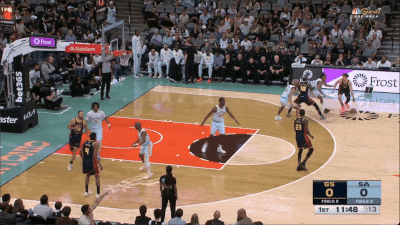
In situations where one side of the floor is emptied for a pick-and-roll set, the help typically comes from the low man on the weak side. However, Curry’s clear-out toward the weak side occupies the attention of any potential help defender:
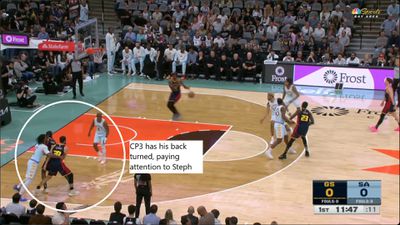
While the direct, on-ball action was a three-man affair between Podziemski, Butler, and Green, Curry’s floor-warping nature — ever present with or without the ball in hands — creates the open lane for Butler. It’s no surprise that with Curry in the lineup alongside Butler, the Warriors are sporting a 17-2 record. With this current starting group of Curry, Podziemski, Moody, Butler, and Green, they have yet to taste defeat (11-0). It also is the only five-man grouping that has played at least 100 minutes this season (119).
In those minutes, the lineup has outscored opponents by a total of 53 points. Going by efficiency metrics, it has outscored opponents by 18.7 points per 100 possessions, with an offensive rating of 117.6 (equivalent to fifth in the NBA) and a defensive rating of 98.8 (better than the best defense in the NBA).
Quality of opposition is indeed something to take note of when taking such metrics into account. The Spurs aren’t exactly the cream of the crop when it comes to the NBA, having lost Victor Wembanyama and De’Aaron Fox to season-ending injuries. Nonetheless, it’s an important win, with the Warriors reclaiming the sixth seed and having an opportunity to jump the Memphis Grizzlies (coincidentally, their next opponent) for the fifth seed.
The win was also a good confidence booster for Podziemski and Moody, who have had mini-slumps coinciding with their recent two-loss slate against the Atlanta Hawks and the Miami Heat — games in which Curry didn’t play. Podziemski scored 27 points on 7-of-9 shooting from beyond the arc, his career-high in threes made in a game.
Butler had a hand in making Podziemski’s looks from three-point range comfortable. Matched up against Stephon Castle in the right block in the possession below, Butler patiently waits to make his move. When help from the top of the key comes his way, Butler finds Podziemski one pass away:
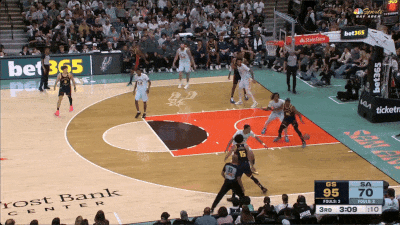
Moody himself was no slouch, scoring 20 points on 3-of-6 shooting from the field, all while playing his patented on-ball defense that has become dependable and consistently fun to watch. But what caught my eye was his aggression off the attention he’s been getting as a spot-up threat. Defenses have been more keen to close out toward Moody, despite his recent slump. Moody has often been reticent to make use of those aggressive closeouts, despite possessing the tools to attack the rim and finish.
Whenever Moody does decide to use defenders’ aggression against them, he has seen success on his forays to the rim. That was especially pronounced against a Spurs team without Wembanyama, who was the presumptive favorite to win Defensive Player of the Year before his injury.
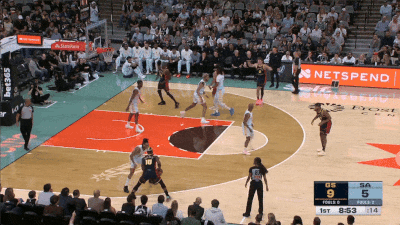
Moody’s success and Jonathan Kuminga reaggravating his ankle ailment — which saw him exit the game early — is of no coincidence, if the on-off numbers are to be believed. With Moody and Kuminga on the floor together (211 minutes), the Warriors have been outscored by 11.8 points per 100 possessions; with Moody on the floor without Kuminga (1,025 minutes), the Warriors have outscored opponents by 6.8 points per 100 possessions, while Kuminga on the floor without Moody (710 minutes) has seen the Warriors outscore opponents by a slimmer margin: 1.4 points per 100 possessions (per PBP Stats).
Moody and Podziemski seeing the start of another good stretch is key to the success of this team. However, it may be at the expense of trying to fit in with Kuminga, who has had a difficult time meshing with Warriors players not named Steph Curry. That is another story altogether, and one worth exploring if Kuminga stays healthy and keeps seeing significant rotation minutes on the floor as the Warriors enter a crucial stretch of regular season basketball.